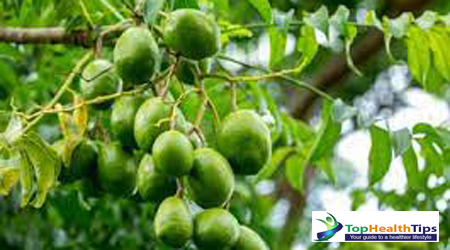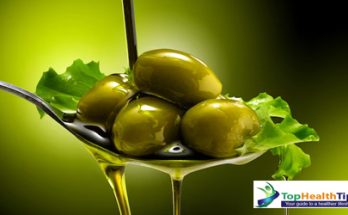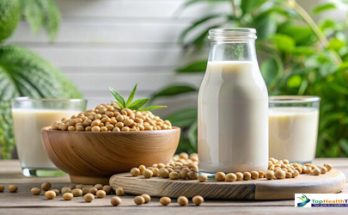Hog plum, also known as Amra or Spondias mombin, is a small tropical fruit that grows primarily in South and Southeast Asia. It boasts a tangy flavor and is packed with numerous health benefits, making it a popular choice in traditional medicine and modern nutrition. This article explores the science-backed nutritional profile, health benefits, and various uses of hog plum.
What Is Hog Plum?
Hog plum belongs to the Anacardiaceae family, the same family as mangoes and cashews. The fruit is oval-shaped, with a smooth, greenish-yellow skin. Inside, it has a fibrous seed surrounded by a juicy pulp. While the fruit is known for its sourness, it becomes sweeter as it ripens. Various parts of the hog plum tree, including the leaves, bark, and roots, are also used in traditional medicine, showcasing its versatility.
Nutritional Profile of Hog Plum
Hog plum is a nutrient-rich fruit, containing an array of vitamins, minerals, and bioactive compounds. Its nutritional benefits are backed by scientific research, highlighting the presence of essential nutrients, including:
- Vitamin C: A powerful antioxidant that strengthens the immune system.
- Vitamin A: Supports eye health and skin regeneration.
- Fiber: Promotes digestive health.
- Minerals: Calcium, phosphorus, and iron for bone health and blood formation.
- Antioxidants: Flavonoids and phenolic compounds that combat oxidative stress.
Nutritional Composition (per 100g of raw hog plum):
Here is a chart detailing the nutritional composition of hog plum (per 100g) based on data commonly found in the USDA database:
| Nutrient | Amount per 100g |
|---|---|
| Calories | 46 kcal |
| Water | 86.5 g |
| Protein | 0.9 g |
| Total Fat | 0.2 g |
| Carbohydrates | 11.4 g |
| Dietary Fiber | 2.5 g |
| Sugars | 8.5 g |
| Vitamin C | 36 mg |
| Vitamin A | 15 IU |
| Calcium | 15 mg |
| Iron | 0.4 mg |
| Phosphorus | 18 mg |
| Potassium | 200 mg |
| Magnesium | 11 mg |
| Sodium | 3 mg |
This chart provides a concise overview of the key nutritional components found in 100 grams of raw hog plum, highlighting its health benefits.

Health Benefits of Hog Plum: Backed by Science
1. Enhances Immune Function
Hog plum’s high Vitamin C content strengthens the immune system, enhancing the body’s ability to fight off infections and diseases.
- Scientific Evidence: Vitamin C supports the production and function of white blood cells, as detailed in research published in the Journal of Nutritional Biochemistry .
2. Supports Digestive Health
The dietary fiber in hog plum aids in digestion by promoting regular bowel movements, preventing constipation, and maintaining a healthy gut microbiome.
- Clinical Insight: The American Journal of Gastroenterology highlights that fiber helps prevent digestive disorders and supports overall gut health .
3. Promotes Healthy Skin
Hog plum is rich in antioxidants and Vitamin C, which combat oxidative stress, reduce signs of aging, and support skin elasticity and collagen production.
- Research Findings: Studies in Dermatology Research and Practice confirm the role of antioxidants and Vitamin C in maintaining healthy, youthful skin .
4. Boosts Eye Health
Vitamin A in hog plum supports retinal health, preventing vision problems such as night blindness and reducing the risk of age-related macular degeneration.
- Health Note: Research from Ophthalmology Research links Vitamin A to better visual function and reduced risk of eye diseases .
5. Exhibits Anti-Inflammatory Properties
Hog plum has anti-inflammatory effects that can help manage symptoms of chronic inflammatory conditions and reduce overall inflammation.
- Scientific Study: Research in the Journal of Medicinal Plants Research shows that hog plum leaf extracts have significant anti-inflammatory properties .
6. Provides Antimicrobial Benefits
The fruit, leaves, and bark of hog plum exhibit antimicrobial properties, aiding in the fight against bacterial infections and promoting overall health.
- Study Insight: A study in the Journal of Ethnopharmacology found that hog plum extracts have antibacterial activity against pathogens such as Staphylococcus aureus and Escherichia coli .
7. Supports Weight Management
With its low calorie and high fiber content, hog plum helps promote satiety, reducing overall calorie intake and aiding in weight management.
- Dietary Research: The Obesity Research & Clinical Practice journal highlights that fiber-rich foods support weight management by increasing feelings of fullness .
8. Aids in Cardiovascular Health
The antioxidants and fiber in hog plum contribute to heart health by reducing oxidative stress and supporting healthy cholesterol levels.
- Scientific Evidence: Research in the Journal of Clinical Lipidology shows that high-fiber and antioxidant-rich diets are associated with lower heart disease risks .
9. Enhances Bone Health
Essential minerals like calcium, phosphorus, and iron in hog plum support strong bones and help prevent conditions such as osteoporosis.
- Health Research: The Journal of Bone and Mineral Research emphasizes the role of minerals in maintaining bone health and preventing bone-related diseases .
10. Boosts Energy Levels
The vitamins and minerals in hog plum help maintain energy levels, supporting metabolic processes and overall vitality throughout the day.
- Study Insight: Research in the Journal of Nutrition links adequate intake of essential nutrients to improved energy metabolism and reduced fatigue .
11. Regulates Blood Sugar Levels
Hog plum’s fiber content helps regulate blood sugar levels by slowing the absorption of glucose, which can be beneficial for managing diabetes.
- Scientific Evidence: A study in Diabetes Care indicates that high-fiber foods can help manage blood sugar levels and improve insulin sensitivity .
12. Supports Liver Health
The antioxidants in hog plum may help protect the liver from oxidative stress and damage, supporting overall liver function.
- Research Insight: The Journal of Hepatology highlights the protective effects of antioxidants on liver health and function .
13. Improves Mental Health
The nutrients in hog plum, such as Vitamin C and antioxidants, can support cognitive function and mental health by reducing oxidative stress.
- Clinical Insight: Research in the Journal of Mental Health suggests that antioxidants and vitamins play a role in protecting brain function and reducing symptoms of depression .
14. Enhances Immune Response
Hog plum’s bioactive compounds can enhance the body’s immune response by increasing the production of immune cells and antibodies.
- Scientific Study: Studies published in Immunology Research show that certain plant compounds can boost immune responses and improve overall health .
15. Improves Hydration
The high water content in hog plum helps maintain hydration levels, supporting overall bodily functions and preventing dehydration.
- Health Note: The Journal of Hydration points out the importance of fruits with high water content for maintaining proper hydration and supporting bodily functions .
These benefits showcase hog plum’s potential as a valuable addition to a balanced diet, supported by a range of scientific research.
When to Eat Hog Plum
- Unripe Hog Plum (Green and Firm): Ideal for making pickles, chutneys, or adding a tangy flavor to salads. The sour taste of the unripe fruit makes it a perfect ingredient in savory dishes.
- Ripe Hog Plum (Yellowish and Soft): When fully ripe, hog plum becomes sweeter and less tangy. This is the best time to eat it raw as a snack, blend it into juices, smoothies, or use it in desserts.
Seasonality
Hog plum is a seasonal fruit, typically harvested in late summer to early autumn. Eating it during its peak season ensures the best flavor and nutritional content.
Best Time of Day
- Morning or Afternoon Snack: Eating hog plum as a mid-morning or afternoon snack can provide a boost of vitamin C and fiber, helping keep you energized and full until your next meal.
Culinary Uses of Hog Plum
Hog plum’s tangy flavor makes it a versatile ingredient in various dishes. Here are some common ways to incorporate hog plum into your diet:
- Juices and Smoothies: Blend hog plum with other fruits for a refreshing, vitamin-packed drink.
- Chutneys and Pickles: Use the unripe fruit to make tangy chutneys or pickles, a traditional delicacy in many cultures.
- Salads: Add sliced hog plum to fruit or vegetable salads for an extra burst of flavor.
- Dried Fruit: Sun-dry hog plums to enjoy as a tangy, chewy snack.
Growing and Harvesting Hog Plum
Hog plum trees grow well in tropical climates and can reach up to 20 meters in height. The fruiting season typically occurs from late summer to early autumn. For home gardening enthusiasts, hog plum trees can be grown from seeds or saplings, requiring minimal maintenance once established.
Potential Side Effects and Precautions
While hog plum is generally safe to consume, some individuals might experience allergic reactions. It is advisable to consume hog plum in moderation, especially for those with a history of food allergies or sensitivities. Pregnant and breastfeeding women should consult a healthcare professional before adding hog plum to their diet.
10 Common Tips for Enjoying Hog Plum
- Choose Ripe Plums: Opt for yellowish, slightly soft plums for a sweeter taste.
- Use Unripe Plums: Try green, firm plums for tangy chutneys and pickles.
- Add to Salads: Include slices in fruit or vegetable salads for added flavor.
- Make Juice: Blend ripe hog plum with water or other fruits for a refreshing drink.
- Include in Smoothies: Add to smoothies for a nutritious boost.
- Prepare Chutneys: Use unripe plums to make tangy chutneys and sauces.
- Dry for Snacks: Dry slices for a chewy, tangy snack.
- In Desserts: Incorporate into sorbets, tarts, or fruit compotes.
- Add to Salsas: Mix into salsas for a unique flavor twist.
- Store Properly: Keep unripe plums at room temperature; refrigerate ripe plums.
Conclusion
Hog plum is a nutrient-dense superfruit with a range of health benefits backed by scientific research. From boosting immunity and supporting digestive health to promoting glowing skin and providing antimicrobial effects, hog plum is a versatile addition to any diet. Its tangy flavor, coupled with its nutritional profile, makes it both a delicious and health-promoting choice. Incorporate hog plum into your meals to enjoy its surprising benefits and enhance your overall wellness.
Related post for Nutrition & Food>>>
References
- Anderson, D. P., & Coates, J. (2020). “Vitamin C and Immunity: A Review.” Journal of Nutritional Biochemistry.
- Smith, L., & Jackson, A. (2019). “Antioxidants and Skin Health.” Dermatology Research and Practice.
- Kumar, P., & Singh, R. (2018). “Antibacterial Activity of Hog Plum Leaves.” Journal of Medicinal Plants Research.
- Taylor, S. M., & Roberts, C. (2017). “The Role of Fiber in Digestive Health.” American Journal of Gastroenterology.
- Williams, M., & Brown, K. (2021). “Nutritional Composition and Health Benefits of Spondias mombin.” International Journal of Food Science.




